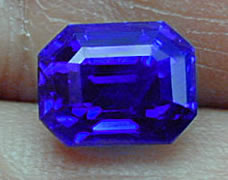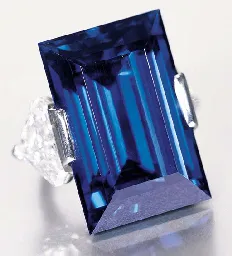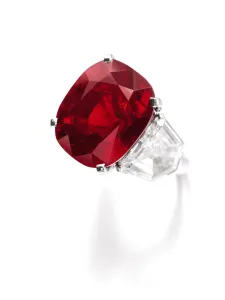The Arcane World of High Priced Gems

“I am showing you this in absolute confidence,
you understand Mr. Wise and I am asking you please
not to mention this stone to anyone”.

So begins a conversation not unlike many similar conversations I have had over the past few years with dealers who specialize in ultra-rare and very high priced gemstones.
The place, Las Vegas 2016, the gem an extraordinary, ultra-rare fancy color diamond, the price, somewhere north of 10 million dollars.
Ultra-high-end gemstones exist, are bought and sold in their own world or rather in two contradictory worlds. Remember the Star Trek episode. The Enterprise discovers a new universe that is the flip side of our own, its just the same only everything is backwards. Sound familiar?
Baubles, Bangles and Glitz:
First there is the glitzy universe or world of the auction houses which has become increasingly the venue where the ultra-fine and ultra-rare and therefore ultra-chic are sold and lately a world record price shattered at every auction.
“Ego is out there, these people want to be seen and the item and purchase price are very public.” says Gloria Lieberman, former head of the jewelry department at Skinner’s Boston where the dealer/retail buyer mix is currently 60/40. The dealers still bring in more dollars, but the auction houses see the handwriting on the wall. They are directing more and more of their marketing toward consumers. The auction market is becoming increasingly a retail venue.
Burning the Stone; Mum’s the Word:
Then there is the universe of the old-line, high end dealers where discretion is the watch word. Picture richly paneled walls, men in conservative well cut suits floating down silent hallways. The reality may be the rabbit-warren of tiny offices at 580 5th Avenue but, hey, lets maintain the illusion.
“At all costs they avoid burning the stone”, says a prominent dealer, “If the price, even the fact of the stone’s existence becomes too public, some buyers will shy away”. This is known in the trade as burning.
This dealer cites the example of the 76.45 carat Archduke Diamond named for the Austrian Arch Duke Joseph August. Molina a high-end Phoenix Jeweler, made a very public show of owning the stone even allowing singer Celine Dion to wear the Archduke on a TV special. In the dealer’s world, this is very bad form. One dealer who was interested in the stone for a client declined to show it once he found out about all the hype surrounding the gem. “Our clients wouldn’t be interested.” The stone had been burned.
Price and Strategy
Auction prices are “an indication not a guideline of a gem’s value” says Marc Lazar a dealer with a mind boggling inventory of ultra-fine white and fancy color diamonds who has, in the past,bought and sold diamonds at auction. “You have to know the details. Who was the buyer”? asks Lazar. Was it a dealer or a retail buyer with a lot of money who didn’t mind paying a high price. Conversely, warns Lazar, a stone may sell for a low price at auction

The 2016 auction record holding Sunrise Ruby
Why would a dealer pay a high price on purpose? As part of a strategy to ratchet up the value of other similar gems he already holds in inventory. One source has suggested that this is exactly what happened with the record ruby sale in 2015. An 8.67 carat “pigeon’s blood” ruby that sold for $425,000 per carat shattering the world’s record per carat price established just the year before when a 8.01 carat of similar color went for $275,00 per carat to a private Asian buyer.
Lawrence Graff, perhaps the world’s most prominent dealer, bought the second stone. According to my source, he didn’t mind paying the highest price ever paid for a natural ruby because he had several more rubies of similar size in his inventory and a rising market raises all boats. The stone has since been reset and modestly renamed The Graff Ruby.
Obviously this sort of wheeling and dealing is not a method you should try at home. As Marc Lazar points out: You must know the market, know the gem, be at the auction and know to whom it sells. Only then are you in a position to decide if the new world’s record price is a true indication of the gem’s market value.
